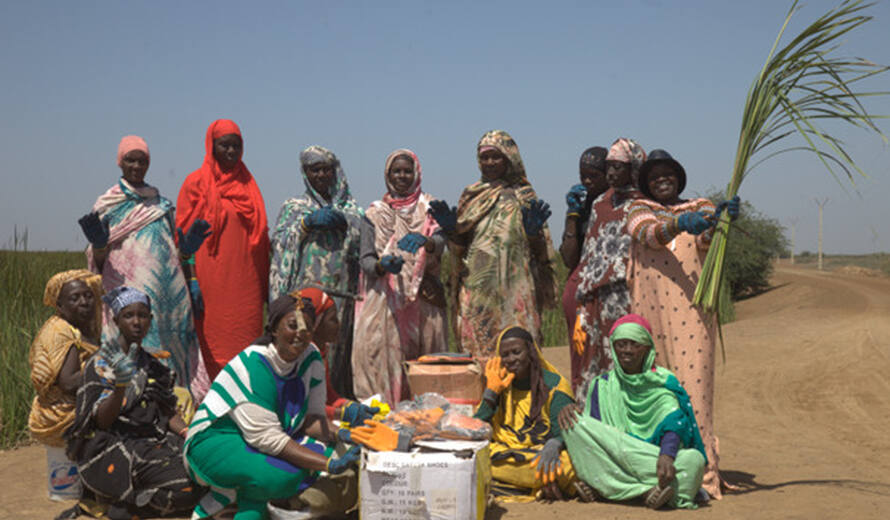UNESCO supports women from local communities around the Djoudj National Bird Sanctuary
Inscribed on the UNESCO World Heritage List in 1981, and placed on the List of World Heritage in Danger twice, from 1984 to 1988 and from 2000 to 2006, the Djoudj National Bird Sanctuary (Senegal) has benefitted from UNESCO's support since 2021 as part of the “Protection measures against the impacts of agricultural and agro-industrial projects in the Djoudj National Bird Sanctuary” project.
This project, financed by a contribution from the Norwegian government, has enabled priority actions to be implemented in the property between 2021 and 2023, specifically aimed at development work involving the cleaning up of sedimented areas, the control of invasive plant species, the construction of functional observatories, the promotion of the park’s Outstanding Universal Value (OUV) and support for capacity-building towards eco-guards for ecological monitoring.
In order to finalise the first phase of the project and plan its second phase, UNESCO visited the property from 5 to 8 March 2024, in collaboration with Senegal’s National Parks Department (DPN). This mission provided an opportunity to assess the achievements and successes of the first phase of the project on the ground, and to hand over a set of working materials to fifteen women from women’s associations in the village of Diadiam 3, located on the outskirts of the property, in order to facilitate the collection, storage and processing of typha. These included 30 hydrophobic suits with integrated boots, 66 pairs of gloves and 53 cutting sickles and machetes.
These materials, which are greatly appreciated by the women’s communities, represent a crucial step towards improving their working conditions for processing typha into mats, thereby creating economic resources for them, but also their effective and indirect involvement in preserving the property, as they will help to reduce the abundance of this invasive species in the property.
The visit to the property also revealed some of the current pressures and threats it is facing, in particular invasive species, namely water lettuce and Salvinia molesta, which are covering several bodies of water, preventing optimum use of natural areas by birds, and also undermining the preservation of its integrity. Recommendations were then made to the management team on the implementation of the decisions of the World Heritage Committee, in particular Decision 45 COM 7B.8, and the key activities to be prioritised for the second phase of the project were planned.
© UNESCO / Moussa Wele © UNESCO / Junior Ohouko
Visit to the property and observation of pelicans (left) and invasion of certain bodies of water in the property by water salad (right)
An environmental education activity is soon to be held in schools around the property, and a story is currently being drawn up, based on the observations made and the achievements of the first phase of the project, with the support of the Communication and Visibility Officer at UNESCO’s Regional Office in Dakar.

